The impressive ruins of Urquhart Castle occupy a commanding site on a promontory jutting out into Loch Ness. Urquhart has had a stormy and dramatic history. Today, the castle provides the ideal viewpoint to look out over the deep, dark and mysterious waters of Scotland’s most famous loch.
Discover all about Urquhart Castle and the enigmatic waters that surround it. Could that shadow be the monster?
Where is Urquart Castle
The castle is situated on the banks of Loch Ness, near the village of Drumnadrochit on the A82 route, around 18 miles south of Inverness and 49 miles north of Fort William.
It’s easy to reach the castle by car, bus or on a one-day tour from Edinburgh, Glasgow or Inverness.
History of Urquhart Castle
Once one of Scotland’s largest castles, Urquhart stands on a promontory on the banks of Loch Ness at a spot where sitings of “Nessie”, the Loch Ness Monster, are most frequent.
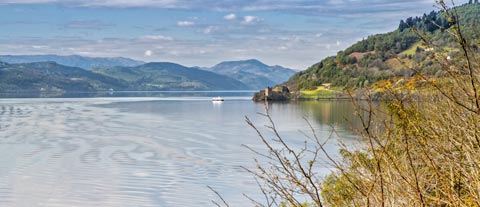
The extensive ruins are most likely built on the site of an Iron Age fort. It was visited by St Columba in the 6th Century when Urquart was the home of Emchath, a Pictish nobleman. It was on this visit that St Columba had his famous encounter with Nessie.
During the Wars of Independence, the castle changed hands on several occasions. In 1296 King Edward I of England captured Urquhart. Over the next 11 years, ownership of the castle swapped between Scottish and English forces until 1307, when followers of King Robert the Bruce finally recaptured the castle.
Lord of the Isles
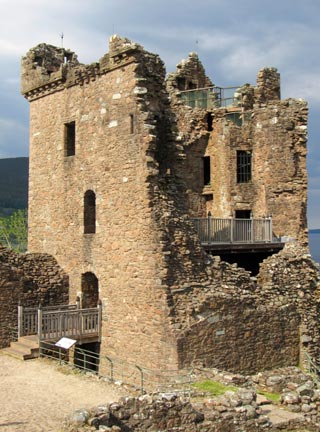
By 1346, Urquhart was controlled by the crown and played an increasingly strategic role in defending the area against raids by the powerful MacDonalds, the Lords of the Isles. In 1509, King James IV, bestowed the lordship of Urquhart on John Grant of Freuchie. He was charged with rebuilding the castle and restoring order to the area.
By 1650, Urquhart was no longer a noble residence and was garrisoned for the last time by Captain James Grant and 300 troops who were protecting the Great Glen against the Jacobites. When the troops left the castle in 1692, some of the buildings were blown up to prevent them from falling into the hands of the Jacobite forces.
Urquhart Castle Ruins
Uncared for, Urquhart soon fell into ruin. Part of the impressive Grant Tower collapsed during a severe storm in 1715.
The increase in visitors to the remote Scottish Highlands in the 1800s due to improved rail and steamer connections brought Urquhart’s impressive setting to public attention, and control of the castle passed to the state in 1913.
Loch Ness and Urquhart Castle Tour
One of the most popular trips for visitors to the Highlands is to experience a cruise on Loch Ness. The Loch Ness Temptation tour offers two departures daily from Inverness. Travel by luxury coach from the heart of Inverness along the banks of the Caledonian Canal, then watch as the mysterious waters of Loch Ness unfold ahead.
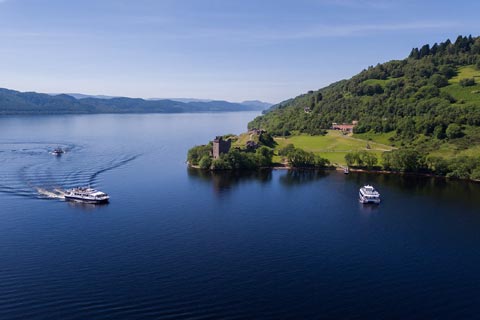
An experienced driver/guide will explain the legend of the loch and provide stories of its most famous resident.
At Clansman Harbour, join a modern cruise boat for a sail across the deep waters of the loch. Watch for any unexpected underwater activity on the onboard sonar, then enjoy spectacular views of Urquhart Castle as the boat sails into the bay.
Hop ashore to explore the castle. Climb the Grant Tower for amazing loch views, see the great hall and visit the prison cell. Amongst the many artefacts on display is a full-sized reconstruction of a medieval trebuchet. The visitor centre contains a scale model of how the castle would have looked in its prime.
You can get more information about this popular tour here.
Loch Ness
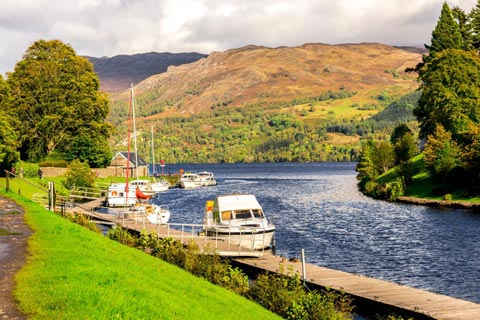
Striking Loch Ness was created by the movement of large tectonic plates during the Ice Age and is the largest of the three lochs in the Great Glen - Lochy, Oich and Ness. The legendary engineer Thomas Telford incorporated these bodies of water as part of his design for the Caledonian Canal.
The 96km (60 mile) canal links Fort William with Inverness and saves vessels the arduous journey through the treacherous Pentland Firth. You can read more about Scotland’s Canals in our blog.
So 36km (23 miles) long and up to 200m (650 ft) deep, Loch Ness contains the largest volume of freshwater of any lake in the British Isles (7,452 million cubic metres). Some experts claim that the loch contains more water than all the lakes of England and Wales combined.
Loch Ness Monster
The enigma of Loch Ness is due almost entirely to its most famous resident, Nessie. The legend of the monster inspires many to visit the loch to try their luck at having a Nessie encounter. Earlier this summer, hundreds of volunteers descended on the loch to watch and record unusual monster activity.
As we explained earlier, the first sighting of the monster was St Columba, who had arrived in Scotland in 563. He was on his way to meet Brude, the King of the Picts. The monster attacked one of his servants as he swam across the River Ness. Columba ordered Nessie to leave the man alone, and the monster slunk away. Having been told off, she kept a low profile for many centuries.
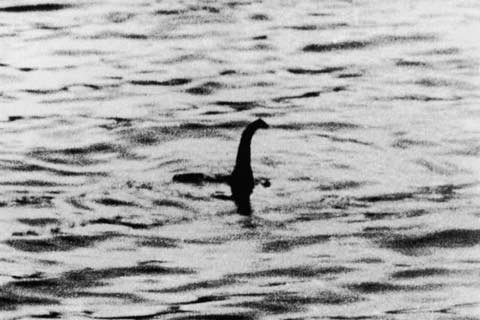
The Modern Monster
Around 90 years ago, when a new road was built along the western shores of the loch, sightings became more frequent.
Several photographs of the monster were published in newspapers, which whetted the public’s imagination.
The most famous was the “Surgeon’s Photograph” which showed the head and neck of the monster. It was taken in 1934, and even though it was proved to be a hoax, it has become an iconic image.
Is the Loch Ness Monster Real - read our blog and make up your own mind.
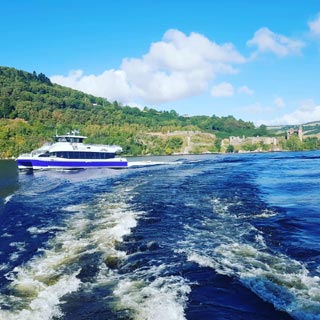
Loch Ness Cruises
You can mount your own Nessie spotting adventure by taking a short boat trip on Loch Ness. Cruises are available from Inverness, Dochgarroch and Clansman Harbour in the northern part of the loch and Fort Augustus in the south.
For adrenalin seekers, fast ribs zip across the loch, searching for the ever-elusive Nessie.
Towns and Villages on Loch Ness
There are several villages and towns near Loch Ness where visitors can stay and explore the area. Some of the notable villages and towns near Loch Ness include:
Inverness: Inverness is the largest city in the Scottish Highlands and serves as a gateway to Loch Ness. It is the region’s primary administrative and commercial centre. The city is known affectionately as the Capital of the Highlands and is an excellent touring base to explore the beautiful scenery of the Scottish Highlands.
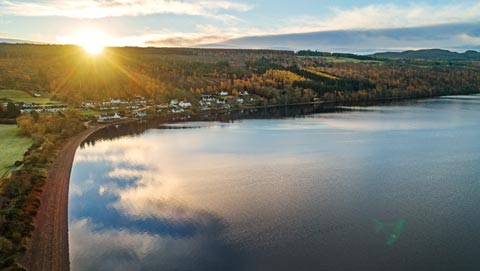
Dores: This village is situated on the northern shore of Loch Ness and is known for its sandy beach. It’s a tranquil spot, ideal for a relaxing day by the water.
Drumnadrochit: This is one of the most popular villages on Loch Ness and is known as the home of the Loch Ness Centre and Nessieland.
Fort Augustus: Located at the southern end of Loch Ness, Fort Augustus is a charming village that sits at the entrance to the Caledonian Canal. It’s an excellent place for boating and offers picturesque views of the loch.
Foyers: Foyers is a small village on the eastern shore of Loch Ness, known for its beautiful waterfall, the Falls of Foyers. It’s a quieter option for those seeking a peaceful escape near the Loch.
Discover Loch Ness with Scottish Tours
Scottish Tours makes it so easy to visit Loch Ness and enjoy its many attractions. Day tours from Edinburgh, Glasgow and Inverness will allow you to combine stunning Highland scenery with the opportunity to sail the dark and deep waters of Loch Ness. Many itineraries feature the chance to visit Urquhart Castle too.
From London, you can easily experience Loch Ness on a 3-day package based in either Edinburgh or Glasgow.
Browse available tours and book online today.

